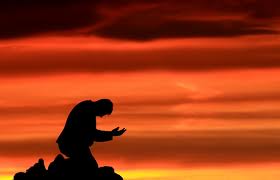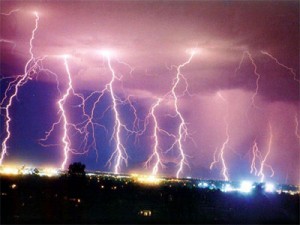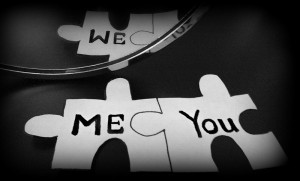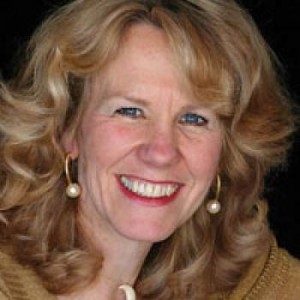Daily Wisdom: The Path to Understanding
Ken Wilber in “A Spirituality That Transforms”:
[Chogyam] Trungpa [Rinpoche] had to introduce translative and lesser practices in order to prepare people for the obviousness of what is.
Exactly the same thing happened with Adi Da, another influential (and equally controversial) adept (although this time, American-born). He originally taught nothing but “the path of understanding”: not a way to attain enlightenment, but an inquiry into why you want to attain enlightenment in the first place. The very desire to seek enlightenment is in fact nothing but the grasping tendency of the ego itself, and thus the very search for enlightenment prevents it. The “perfect practice” is therefore not to search for enlightenment, but to inquire into the motive for seeking itself. You obviously seek in order to avoid the present, and yet the present alone holds the answer: to seek forever is to miss the point forever. You always already ARE enlightened Spirit, and therefore to seek Spirit is simply to deny Spirit. You can no more attain Spirit than you can attain your feet or acquire your lungs.
Nobody got it. And so Adi Da, exactly like Trungpa, introduced a whole series of translative and lesser transformative practices–seven stages of practice, in fact–leading up to the point that you could dispense with seeking altogether, there to stand open to the always-already truth of your own eternal and timeless condition, which was completely and totally present from the start, but which was brutally ignored in the frenzied desire to seek.
For more, read the entire article.




 Whereas translative religion offers legitimacy, transformative religion offers authenticity. For those few individuals who are ready–that is, sick with the suffering of the separate self, and no longer able to embrace the legitimate worldview–then a transformative opening to true authenticity, true enlightenment, true liberation, calls more and more insistently. And, depending upon your capacity for suffering, you will sooner or later answer the call of authenticity, of transformation, of liberation on the lost horizon of infinity.
Whereas translative religion offers legitimacy, transformative religion offers authenticity. For those few individuals who are ready–that is, sick with the suffering of the separate self, and no longer able to embrace the legitimate worldview–then a transformative opening to true authenticity, true enlightenment, true liberation, calls more and more insistently. And, depending upon your capacity for suffering, you will sooner or later answer the call of authenticity, of transformation, of liberation on the lost horizon of infinity.

 What’s the path of third person? The path of third person is the path of wonder, utter and absolute wonder in which I engage not in a human face-to-face relationship, not in a dialogue. Not in a place in which there’s a conversation that takes place. It’s about the path of awe and wonder where I step back and I allow myself to be overwhelmed by the full and infinite wonder, texture, beauty, complexity, infinity of All-That-Is.
What’s the path of third person? The path of third person is the path of wonder, utter and absolute wonder in which I engage not in a human face-to-face relationship, not in a dialogue. Not in a place in which there’s a conversation that takes place. It’s about the path of awe and wonder where I step back and I allow myself to be overwhelmed by the full and infinite wonder, texture, beauty, complexity, infinity of All-That-Is. One of the key values a couple must share in the biblical myth vision is a commitment to make the world a better place. They must be lovers not only to each other but to the world. This means that they are committed to looking beneath the surface of reality to search for the sparks of the sacred that can be hidden in the most unlikely of places. This is the commitment to love as perception: to find the good – the God points – hidden behind the obfuscating veils of an often painful reality. They are committed to healing and repairing the world even as they understand that they are not in control.
One of the key values a couple must share in the biblical myth vision is a commitment to make the world a better place. They must be lovers not only to each other but to the world. This means that they are committed to looking beneath the surface of reality to search for the sparks of the sacred that can be hidden in the most unlikely of places. This is the commitment to love as perception: to find the good – the God points – hidden behind the obfuscating veils of an often painful reality. They are committed to healing and repairing the world even as they understand that they are not in control. A life well lived does not mean a life without mistakes. It means making mistakes in the right direction. A famous Talmudic passage re-read by my teacher Mordechai Lainer of Izbica says roughly as follows “One cannot follow the direction of one’s life until one first fails in pursuing that very direction.” Or in another passage, the Talmud itself writes, “The wicked falls once and does not rise, the Master falls seven times and rises each time again”.
A life well lived does not mean a life without mistakes. It means making mistakes in the right direction. A famous Talmudic passage re-read by my teacher Mordechai Lainer of Izbica says roughly as follows “One cannot follow the direction of one’s life until one first fails in pursuing that very direction.” Or in another passage, the Talmud itself writes, “The wicked falls once and does not rise, the Master falls seven times and rises each time again”.
 By deploying intellectual, meditative and mystical faculties, the lover of divine text moves to unpack the fresh invitation of the divine voice. The divine voice speaks presently to the individual and the community in the eternal now.
By deploying intellectual, meditative and mystical faculties, the lover of divine text moves to unpack the fresh invitation of the divine voice. The divine voice speaks presently to the individual and the community in the eternal now. But, we ask, what will happen to our drive for progress if we see all opposites are one? Well, with any luck, it will stop–and with it that peculiar discontent that thrives on the illusion that the grass is always greener on the other side of the fence. But we should be clear about this. I do not mean that we will cease making advancements of a sort in medicine, agriculture, and technology. We will only cease to harbor the illusion that happiness depends on it. For when we see through the illusions of our boundaries, we will see, here and now, the universe as Adam saw it before the Fall: an organic unity, a harmony of opposites, a melody of positive and negative, delight with the play of our vibratory existence. When the opposites are realized to be one, discord melts into concord, battles become dances, and old enemies become lovers. We are then in a position to make friends with all of our universe, and not just one half of it.
But, we ask, what will happen to our drive for progress if we see all opposites are one? Well, with any luck, it will stop–and with it that peculiar discontent that thrives on the illusion that the grass is always greener on the other side of the fence. But we should be clear about this. I do not mean that we will cease making advancements of a sort in medicine, agriculture, and technology. We will only cease to harbor the illusion that happiness depends on it. For when we see through the illusions of our boundaries, we will see, here and now, the universe as Adam saw it before the Fall: an organic unity, a harmony of opposites, a melody of positive and negative, delight with the play of our vibratory existence. When the opposites are realized to be one, discord melts into concord, battles become dances, and old enemies become lovers. We are then in a position to make friends with all of our universe, and not just one half of it. Of course, to remind another of their full beauty you have to be fully aware of your own. The Baal Shem Tov has a wonderful teaching on the biblical mandate “love your neighbor as you love yourself.” First it is a statement of fact–you love your neighbor precisely as much as you love yourself. For in the end, you can only perceive another’s greatness if you have glimpsed and believe in your own. Self-love is self-perception.
Of course, to remind another of their full beauty you have to be fully aware of your own. The Baal Shem Tov has a wonderful teaching on the biblical mandate “love your neighbor as you love yourself.” First it is a statement of fact–you love your neighbor precisely as much as you love yourself. For in the end, you can only perceive another’s greatness if you have glimpsed and believe in your own. Self-love is self-perception. To love someone is to see them with God’s eyes, to perceive them at their highest place, like — as His Holiness said — the mother who sees the baby. The mother, no matter what the baby does when older, always sees the baby as divine. Therefore we call God in Hebrew mysticism, Kabbalah, the divine breast of the Mother who feeds us all.
To love someone is to see them with God’s eyes, to perceive them at their highest place, like — as His Holiness said — the mother who sees the baby. The mother, no matter what the baby does when older, always sees the baby as divine. Therefore we call God in Hebrew mysticism, Kabbalah, the divine breast of the Mother who feeds us all.
 Only someone who chooses to step into her story can find voice and respond to her call.
Only someone who chooses to step into her story can find voice and respond to her call. Join us for a new free event, “Unique Self and Creating your Life on Purpose”! On Thursday, Dec 6 at 6pm PT (9pm PT) Marc Gafni with be joined by Anodea Judith, author of Creating on Purpose, for a spirited discussion about the ideas contained in both their new books.
Join us for a new free event, “Unique Self and Creating your Life on Purpose”! On Thursday, Dec 6 at 6pm PT (9pm PT) Marc Gafni with be joined by Anodea Judith, author of Creating on Purpose, for a spirited discussion about the ideas contained in both their new books.